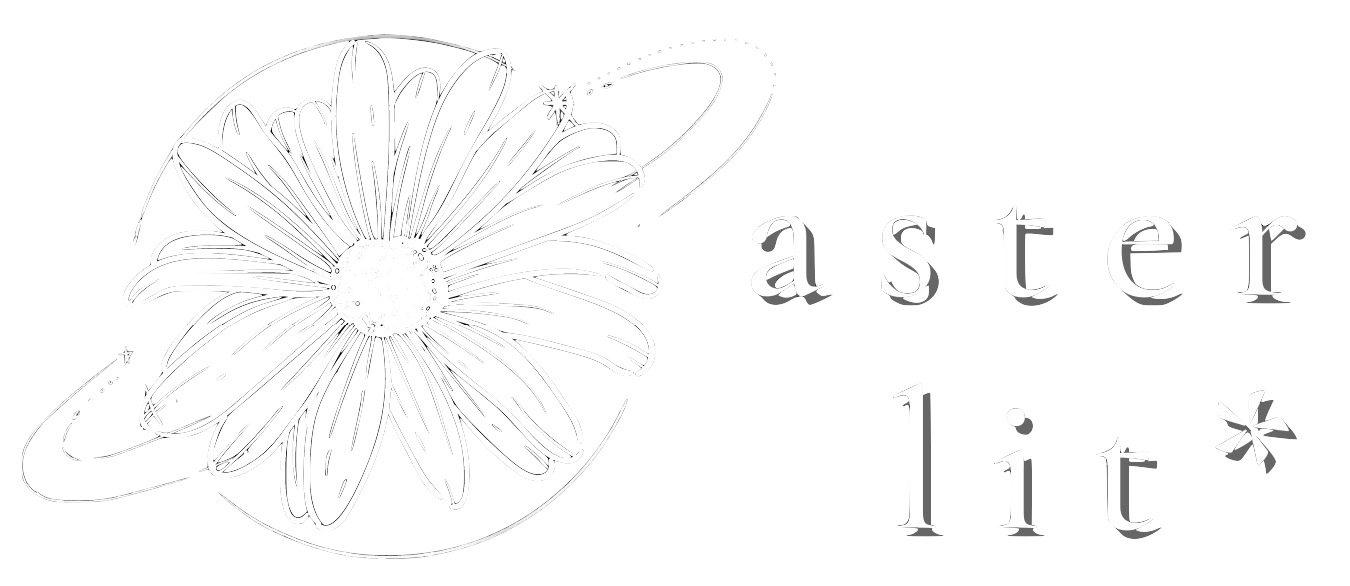
Aster Lit: translatability
Issue 12- Summer 2024
Translating Translation
- Prose -
Sripurna Majumdar, India
The Latin word translationem denotes an act of carrying across, an act of transportation. In the 12th century, the French word translacion meant the process of removal of a saint’s body or relics and transporting them to a new place. Translation today, is the act of rendering of a text from one language to another. It is a process of spatial transportation, and thus is a spatial metaphor. With its roots in the Greek word metaphora, the word metaphor too signifies a form of translation, the translation of ideas and images into words.
Is translation a unilinear, singular act? It is so in the Global North, primarily because of the fact that almost every country in the West is monolingual. But in the Global South, the process of translation acquires a myriad of dimensions. From the radical theory of ‘cannibalistic’ translation propounded by Haroldo de Campos in Brazil as a resistance against the long history of cultural and political dominance by the Europeans, to the idea of ‘J-translation’ introduced by Judy Wakabayashi in Japan; the South has always shown diverse approaches to the single act.
In India, the situation is even more varied. A country of 1.42 billion people, it is home to numerous cultures, beliefs and languages. It is really interesting to note that there has never been a singular synonym of translation in the various languages of India. While growing up, I myself have encountered different words denoting translation while reading books written in my mother-tongue, Bangla— anuvād, tarjuma, rupāntar, bhāshāntar and so on. Why this multiplicity? Well, it shows the heterogeneity of lenses through which the act of translation has been viewed across the country for thousands of years. The act has remained the same, but the modus operandi has changed with every approach.
The Sanskrit word anuvād is made of two terms— anu (follow) and vād (speech). It basically means: to say after, to repeat, to follow the speech. It is thus not a spatial, but rather a temporal metaphor. This is due to the tradition of orality in the subcontinent; for a long time, literary works were preserved not in a physical space like paper, but rather in people’s memory. The concept of originality or the ‘original author’ was thus not present. Every utterance while being repeated after a period of time, gets changed even if to a minuscule degree. The concept of anuvād thus opens the door to preservation of a text through repetition and often, a little bit of alteration adding to the magic.
The word rupāntar (in Sanskrit, Hindi and Bangla) signifies a change (antar) of form (rup). Change according to changing surrounding conditions and habitat. The source text thus undergoes adaptation during translation; it develops its own way of survival in different target texts created by different translators at different points in space-time. A close analogue is the Malayalam term for translation: vivartanam. The word vivartan means evolution. Evolution is the genetic change in species or populations over time. It can be considered as the process of adaptability in a new space and climate. The text is thus being thought of as a living organism, undergoing evolution through the process of translation.
What happens when we try to think of the multiplicity of translations of a single text? A text can be interpreted in countless number of ways, each interpretation having a distinct quality of its own. Thus arises another dimension: the Arabic word tarjuma. This concept regards translation as paraphrasing, an act of interpretation by the translator.
The Hindi conception of chhāyānuvād sees translation as a shadow (chhāyā) of the source text. It may seem that it thus speaks of blindly following the source, just as a shadow does. But it is important to remember that even the shadow changes with direction and position in relation to the light source. The perspective of the translator thereby gets highlighted. Chhāyānuvād posits translation as a feat of illumination.
The Assamese word for translation is bhāngoni. It means an action of breaking, hence regarding translation as a gradational, piecemeal arrangement of words and ideas in a new language. The breakdown of the source text and it’s restructuring thus fabricates the translation. For instance, the 14th century Assamese poet Madhava Kandali translated Valmiki’s Sanskrit Ramayana into the Assamese language as Saptakanda Ramayana, the first of its kind among all the languages of North-East India. A particular feature of this work is the non-heroic portrayal of Rama, Sita and other characters unlike in Valmiki’s Ramayana. Kandali structured his work according to the taste of the common folk in order to make it more popular. He did not translate the shlokas (a poetic form used in Sanskrit) of Valmiki’s Ramayana as it is and abandoned some long descriptive passages. His work was thus not a verbatim translation per se but rather, a bhāngoni, a breakdown, a reformatting.
The multitude of approaches to translation: viewing it as repetition, adaptation, evolution, interpretation, illumination and fragmentation shows the diversity of perspectives in translating translation. Every Indian language has its own way of dealing with this question, and when assembled— they present a brimming Pandora’s Box!
Sripurna Majumdar is an undergraduate student of Comparative Literature at Jadavpur University in India. She loves writing non-fiction pieces and reading all sorts of books. Star-gazing is one of her favourite hobbies.

